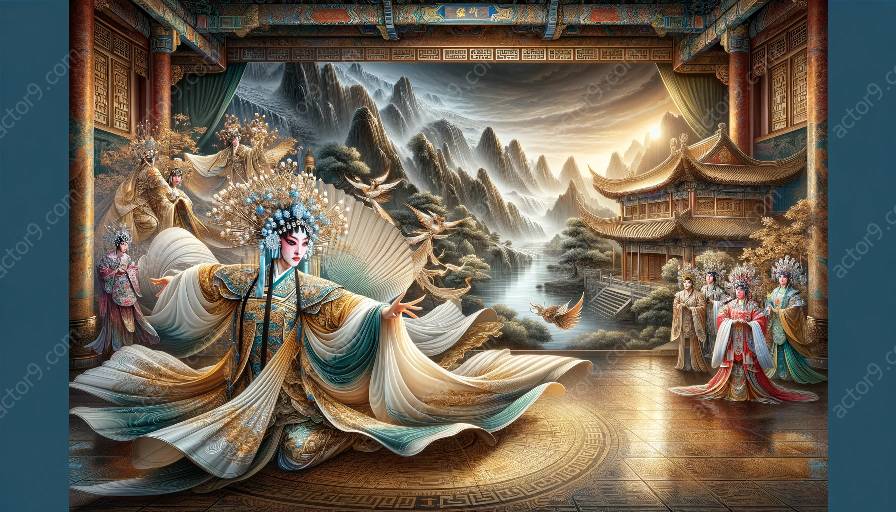The world of performing arts is rich with diverse techniques and traditions. When comparing Peking Opera techniques with Western acting techniques, significant differences emerge, influenced by cultural, historical, and artistic contexts.
Understanding Peking Opera Techniques
Peking Opera, a traditional Chinese theater form, places a strong emphasis on stylized movements, intricate gestures, and elaborate costumes. Performers undergo rigorous training to master specific skills, including acrobatics, martial arts, and vocal techniques.
Facial expressions, known as 'jing,' are a cornerstone of Peking Opera, conveying a broad range of emotions and character traits through exaggerated makeup and carefully choreographed movements. This differs notably from Western acting, which often relies on more naturalistic approaches to express emotions and convey character nuances.
Key Characteristics of Peking Opera Techniques:
- Stylized movements and gestures
- Emphasis on jing (facial expressions)
- Incorporation of acrobatics and martial arts
- Elaborate costumes and makeup
Contrasting with Western Acting Techniques
In Western acting, the emphasis is often placed on psychological realism, internal characterization, and naturalistic portrayals. Actors are trained to depict genuine human emotions and physiological responses, drawing from personal experiences and observational studies.
Western acting techniques also prioritize the use of voice and speech to convey emotions, thoughts, and intentions, with an emphasis on the organic development of character motivations and behavioral patterns. This contrasts with Peking Opera, where vocal techniques and physical movements are deeply intertwined with traditional aesthetics and cultural symbolism.
Key Characteristics of Western Acting Techniques:
- Psychological realism and internal characterization
- Naturalistic portrayal of human emotions
- Emphasis on voice and speech for character expression
- Use of personal experiences for character development
Cultural Context and Influence
The divergence between Peking Opera techniques and Western acting techniques is rooted in the historical and cultural backgrounds of their respective traditions. Peking Opera reflects the rich heritage of Chinese performing arts, incorporating ancient myths, legends, and moral values into its storytelling. The use of symbolism, gesture language, and codified movements reflects the cultural significance of Peking Opera as a vehicle for preserving Chinese traditions and values.
In comparison, Western acting techniques have evolved through the influences of dramatic literature, psychological theories, and societal developments. From the works of Greek tragedians to the modern methods of Stanislavski and Meisner, Western acting has adapted to reflect evolving cultural norms and artistic movements.
Cultural and Historical Influence on Techniques:
- Peking Opera as a preservation of Chinese traditions
- Western acting techniques shaped by dramatic literature and psychological theories
- Reflecting societal developments and cultural shifts
Conclusion
The exploration of Peking Opera techniques and Western acting techniques reveals the depth of diversity within the global landscape of performing arts. By appreciating the distinct approaches to movement, expression, and cultural symbolism, we gain a richer understanding of the artistic nuances that define these traditions. While each tradition has its unique strengths, both Peking Opera and Western acting techniques contribute to the rich tapestry of global theater and performance.













































